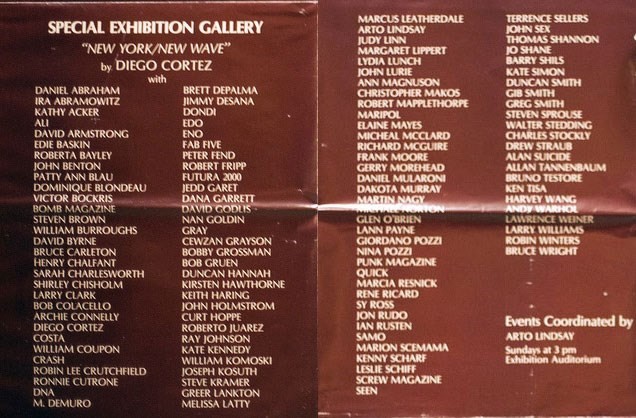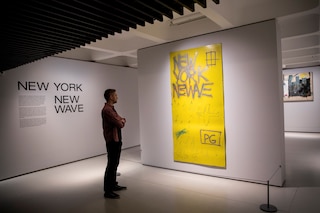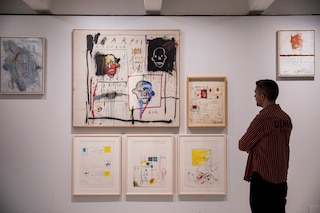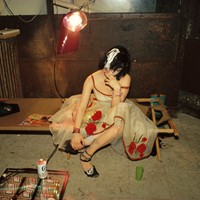In 1981, Diego Cortez offered the then-20-year-old artist a major launch pad with a show titled New York/New Wave
New York/New Wave, curated by Diego Cortez at New York’s MoMA PS1 in February 1981, is one of those moments that set the course for how the city’s art scene would go on. Five years after punk and new wave music flooded its clubs, the creative scene was bubbling with angst and frenetic energy and Cortez’s New York/New Wave packaged it up for the art world elite.
The show itself featured over 100 artists, including Andy Warhol, Maripol, Keith Haring, amongst many others. Pieces hung from floor to ceiling in a range of mediums and styles. An interview with Marc H. Miller from the time (via ART/new york) observed, “the differences (of the works) being more obvious than the similarities”. Miller holds his mic towards Cortez and asks, “What is the future for these artists? Do you think they’ll be professionals?” Cortez, standing with his arms folded on his chest, responds, with a slight pause, “Yeah... I don’t think all of them are professionals right now, but I haven’t worried about the word ‘professional’… what’s a professional?” As the camera pans over artworks from then-newcomer Jean-Michel Basquiat, the answer, now, feels trivial. Whether Basquiat would actively claim the word ‘professional’ if he were still alive today, we don’t and will never know. However, with last year’s news that an untitled painting by Basquiat sold for $110m at auction, and as the first-ever UK retrospective of his work enters its closing days at London’s Barbican – where there is a room dedicated to Cortez’s seminal show – it’s clear that Basquiat is one of contemporary art’s most brilliant luminaries.
Cortez was one of the few art world figures who, in Basquiat’s early days, saw his spark. When Basquiat was just 20 years old, the curator offered him a platform in New York/New Wave to show multiple works – a move which has since been credited as one of the launch moments of Basquiat’s career.
Catching up with Cortez in London, the curator shares stories of how he and Basquiat met on the dance floor at the Mudd Club, of buying him art supplies, and he also reveals the reason he refused to speak at the artist’s funeral.
“I met Jean-Michel in the summer of 1978 on the dance floor of the Mudd Club shortly after it had opened. He was a black man with a blonde mohawk, and I thought that was kind of advanced. Everyone was group dancing together so I moved closer to him and started talking, and from that we became good friends. He was always wanting to crash at my place on Delancey Street in the Lower East Side. Even though I liked him a lot as a friend, I didn't want him to stay there because I felt like he would never move out (laughs). I liked to live alone, and I still do.
We used to go to the Mudd Club every night but I didn't really know about his work. I knew he was interested in art but I didn't know what he did. It was almost a year later that I saw his SAMO© graffiti and I kind of flipped out. I hadn’t ever noticed it before even though I think it had been up for a while. I ran into him on the street one day when I was coming out of a luncheon place and I sat with him on the steps and said, ‘Y'know those SAMO© graffiti things are incredible and you should do paintings and drawings because you could sell them and make a living’ – because was always broke and hitting people up for money. So I literally, like a cliché, said: ‘You could be as big as Andy Warhol’. It sounds absurd now, looking back – saying something like that – but it actually kind of became true in his lifetime.
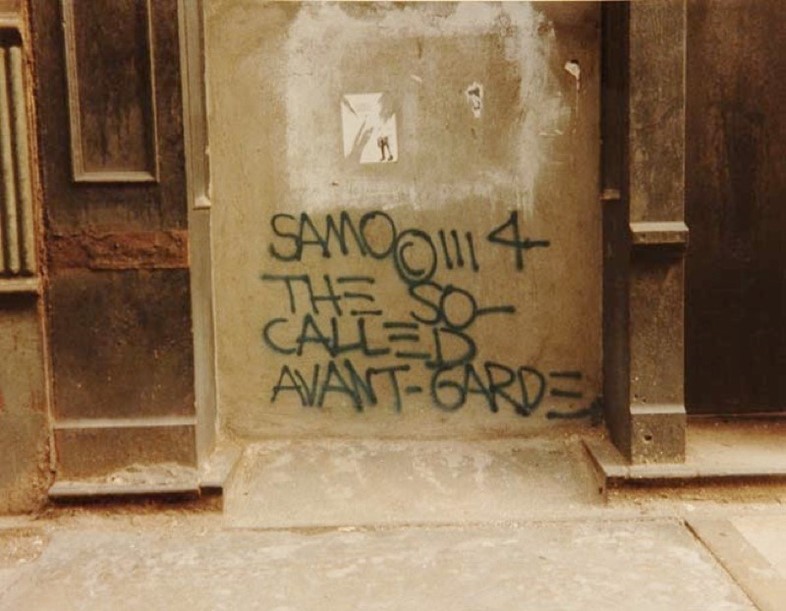
When I saw the the SAMO© graffiti stuff, I knew (he would be big). There was always that feeling of determination (with Basquiat). After the (New York/New Wave) show at PS1, I organised his first one-man show in Italy, with Emilio Mazzoli. I did that because none of the galleries were interested in him, and I wanted him to go into Bruno Bischofberger (gallery, Switzerland) I knew some of the artists there. Yet it didn't seem like it was going to happen, so I organised this show with Mazzoli who was a kind of competitor of Bruno, and then after that show, Bruno contacted me saying he was interested in Jean-Michel. I mean the public and artists were interested were interested in him, but I remember Leo Castelli saying, ‘No. I'm not interested in his work – I prefer Futura 2000’.
So I gave him some money for some paper and pre-stretched canvases and then when he brought them back I sold them to different people. Jeffrey Deitch and other people in the art world who were important. His work always immediately connected to people: the popular level, the top critics level. Even though some people didn't like the work, I think a lot of people in the art world were always surprised how kind of instantly famous he became. But it didn't surprise me at all, and even what's happening now, with regards to the art market, doesn't surprise me. A Japanese collector bought his painting for $110million.
I had dinner with John McEnroe (tennis star and art collector) like three years before (the sale), when he had just sold most of his Basquiat collection. He had a really great collection: drawings and paintings, and I said, ‘How did you get interested in Jean-Michel?’, and he said it was through his wife. He said, ‘I didn't like it at first but then I liked it, but I sold my collection’, and I said, ‘you did?’ And he replied, 'don't you think I did the right thing? Because the prices have peaked?’ And I said ‘no, I don't. It took 30 years to get (the paintings to) $15 million, and it’s gunna take three years to get to $100million’. After the auction, he sent me a text saying, ‘you were exactly correct’. Three years to the day.
“I don't like the sociological aspect of people talking about Jean-Michel, like he came from this (party) scene. It's just anecdotal and I think it's more important to talk about his work” – Diego Cortez
“If I told you a story it'd probably be more about myself with him, y'know? Cos I had a work relationship with him, but those kind of relationships are largely behind the scenes so you don't really get in the way of the artists. If you're a curator, or an advisor or an agent, they’re not supposed to be talking about themselves... you talk about the artist. But I think everything has already been written or you can see it in the movies. It's like, I don't have anything to say about his persona, other than it was what I've already told you. He was very determined and very brilliant.
“Also, I don't like the sociological aspect of people talking about Jean-Michel, like he came from this (party) scene. It's just anecdotal and I think it's more important to talk about his work. I understand that you want people to know more about who he was as a person, but I'm not interested in people in that way. But in terms of portraying him to the public, I don't think there's enough scholarship of his work, or people understanding why he's important and that annoys me, so I always try to stay focused on his work.
“I think there are enough clues about who he was – he was in films and interviews, and books, Hollywood films… all kind of things… and you probably know more about him than I do!
“I had a few problems with his anger, but in general he was always very sweet to me. I didn't hang out with him for the last four or five years because of the drugs, but I'd bump into him a couple of times a year. The last time I saw him was after one of his shows, he was already involved with drugs, and he was very apologetic, like, ‘I'm really sorry… I had this drug problem, and I really appreciate your work’.
“Jean was very trusting of people, even though they talk about how distrustful he was. He trusted me. Y'know, my job was with the work; I'm a curator, so for me, the artist is secondary, the work is what's important. I'm only interested in the work.
I have an aversion to the drug thing. Glenn O'Brien asked me to speak at his memorial service, and I said ‘No’. I said, ‘I'm not going’, and he said, ‘why?’ and I said, ‘because if I got up in front of all of our friends, I would start screaming at them for all being a bunch of druggy losers – y’know. (laughs) I love ending on a tragic note.”
Boom For Real is on at London’s Barbican until 28 January 2018
